Lu Cao
Analysis of 3D Urticaceae Pollen Classification Using Deep Learning Models
Mar 10, 2025Abstract:Due to the climate change, hay fever becomes a pressing healthcare problem with an increasing number of affected population, prolonged period of affect and severer symptoms. A precise pollen classification could help monitor the trend of allergic pollen in the air throughout the year and guide preventive strategies launched by municipalities. Most of the pollen classification works use 2D microscopy image or 2D projection derived from 3D image datasets. In this paper, we aim at using whole stack of 3D images for the classification and evaluating the classification performance with different deep learning models. The 3D image dataset used in this paper is from Urticaceae family, particularly the genera Urtica and Parietaria, which are morphologically similar yet differ significantly in allergenic potential. The pre-trained ResNet3D model, using optimal layer selection and extended epochs, achieved the best performance with an F1-score of 98.3%.
Towards Homogeneous Lexical Tone Decoding from Heterogeneous Intracranial Recordings
Oct 13, 2024



Abstract:Recent advancements in brain-computer interfaces (BCIs) have enabled the decoding of lexical tones from intracranial recordings, offering the potential to restore the communication abilities of speech-impaired tonal language speakers. However, data heterogeneity induced by both physiological and instrumental factors poses a significant challenge for unified invasive brain tone decoding. Traditional subject-specific models, which operate under a heterogeneous decoding paradigm, fail to capture generalized neural representations and cannot effectively leverage data across subjects. To address these limitations, we introduce Homogeneity-Heterogeneity Disentangled Learning for neural Representations (H2DiLR), a novel framework that disentangles and learns both the homogeneity and heterogeneity from intracranial recordings across multiple subjects. To evaluate H2DiLR, we collected stereoelectroencephalography (sEEG) data from multiple participants reading Mandarin materials comprising 407 syllables, representing nearly all Mandarin characters. Extensive experiments demonstrate that H2DiLR, as a unified decoding paradigm, significantly outperforms the conventional heterogeneous decoding approach. Furthermore, we empirically confirm that H2DiLR effectively captures both homogeneity and heterogeneity during neural representation learning.
Towards free-response paradigm: a theory on decision-making in spiking neural networks
Apr 16, 2024Abstract:The energy-efficient and brain-like information processing abilities of Spiking Neural Networks (SNNs) have attracted considerable attention, establishing them as a crucial element of brain-inspired computing. One prevalent challenge encountered by SNNs is the trade-off between inference speed and accuracy, which requires sufficient time to achieve the desired level of performance. Drawing inspiration from animal behavior experiments that demonstrate a connection between decision-making reaction times, task complexity, and confidence levels, this study seeks to apply these insights to SNNs. The focus is on understanding how SNNs make inferences, with a particular emphasis on untangling the interplay between signal and noise in decision-making processes. The proposed theoretical framework introduces a new optimization objective for SNN training, highlighting the importance of not only the accuracy of decisions but also the development of predictive confidence through learning from past experiences. Experimental results demonstrate that SNNs trained according to this framework exhibit improved confidence expression, leading to better decision-making outcomes. In addition, a strategy is introduced for efficient decision-making during inference, which allows SNNs to complete tasks more quickly and can use stopping times as indicators of decision confidence. By integrating neuroscience insights with neuromorphic computing, this study opens up new possibilities to explore the capabilities of SNNs and advance their application in complex decision-making scenarios.
Toward spike-based stochastic neural computing
May 23, 2023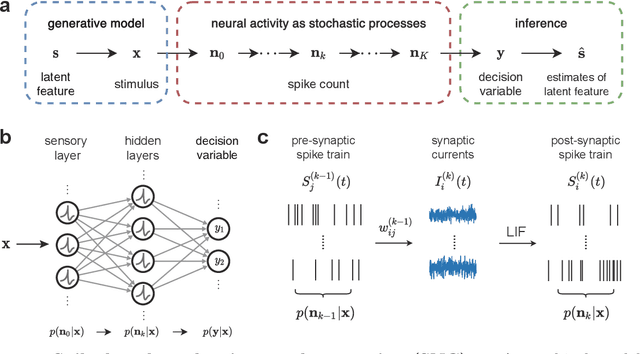
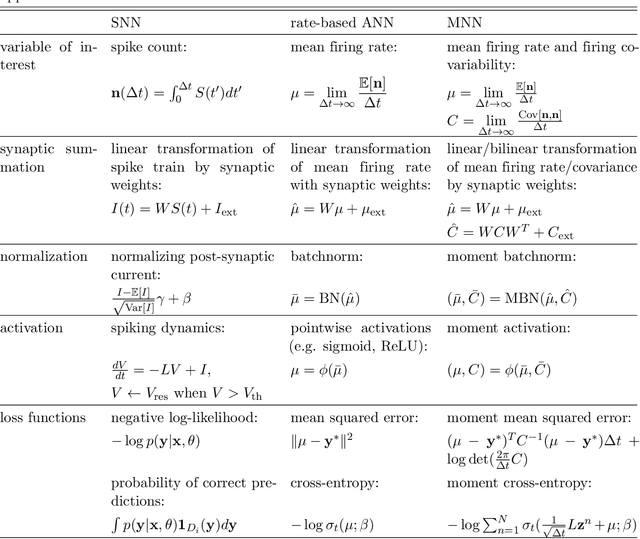
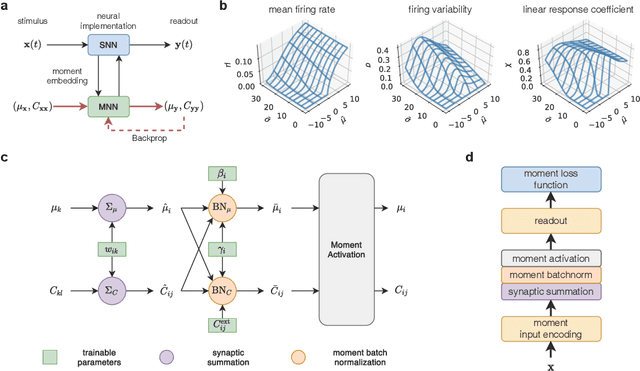
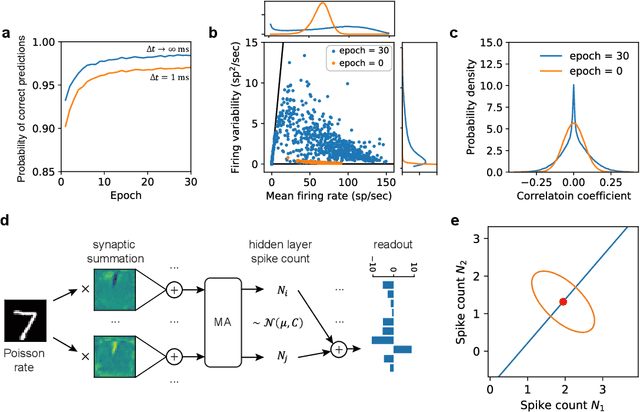
Abstract:Inspired by the highly irregular spiking activity of cortical neurons, stochastic neural computing is an attractive theory for explaining the operating principles of the brain and the ability to represent uncertainty by intelligent agents. However, computing and learning with high-dimensional joint probability distributions of spiking neural activity across large populations of neurons present as a major challenge. To overcome this, we develop a novel moment embedding approach to enable gradient-based learning in spiking neural networks accounting for the propagation of correlated neural variability. We show under the supervised learning setting a spiking neural network trained this way is able to learn the task while simultaneously minimizing uncertainty, and further demonstrate its application to neuromorphic hardware. Built on the principle of spike-based stochastic neural computing, the proposed method opens up new opportunities for developing machine intelligence capable of computing uncertainty and for designing unconventional computing architectures.
SGED: A Benchmark dataset for Performance Evaluation of Spiking Gesture Emotion Recognition
Apr 28, 2023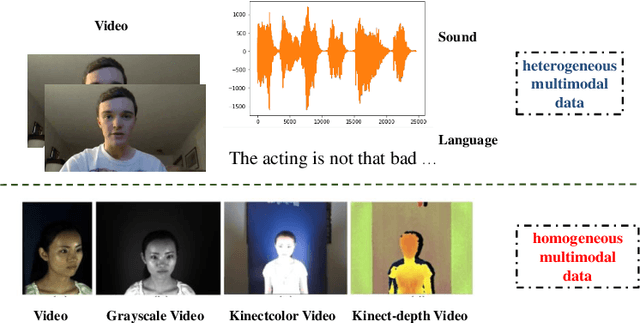
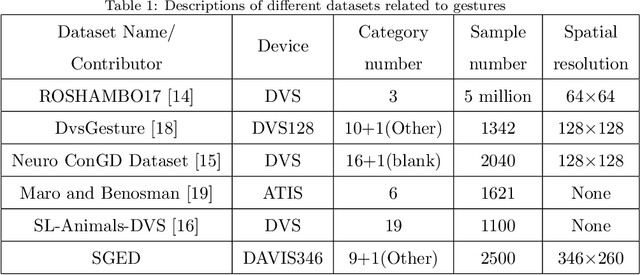

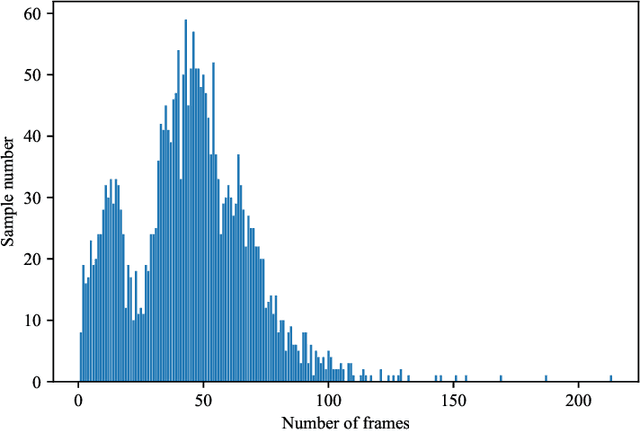
Abstract:In the field of affective computing, researchers in the community have promoted the performance of models and algorithms by using the complementarity of multimodal information. However, the emergence of more and more modal information makes the development of datasets unable to keep up with the progress of existing modal sensing equipment. Collecting and studying multimodal data is a complex and significant work. In order to supplement the challenge of partial missing of community data. We collected and labeled a new homogeneous multimodal gesture emotion recognition dataset based on the analysis of the existing data sets. This data set complements the defects of homogeneous multimodal data and provides a new research direction for emotion recognition. Moreover, we propose a pseudo dual-flow network based on this dataset, and verify the application potential of this dataset in the affective computing community. The experimental results demonstrate that it is feasible to use the traditional visual information and spiking visual information based on homogeneous multimodal data for visual emotion recognition.The dataset is available at \url{https://github.com/201528014227051/SGED}
A Fast Feature Point Matching Algorithm Based on IMU Sensor
Jan 03, 2023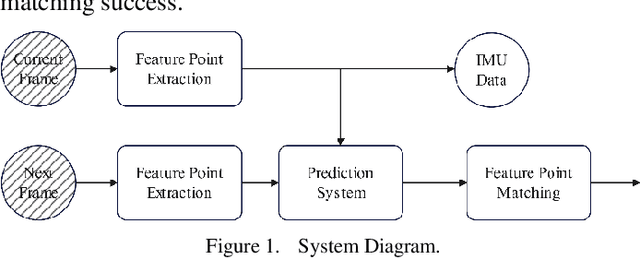
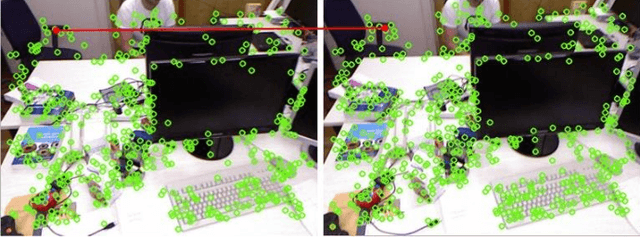
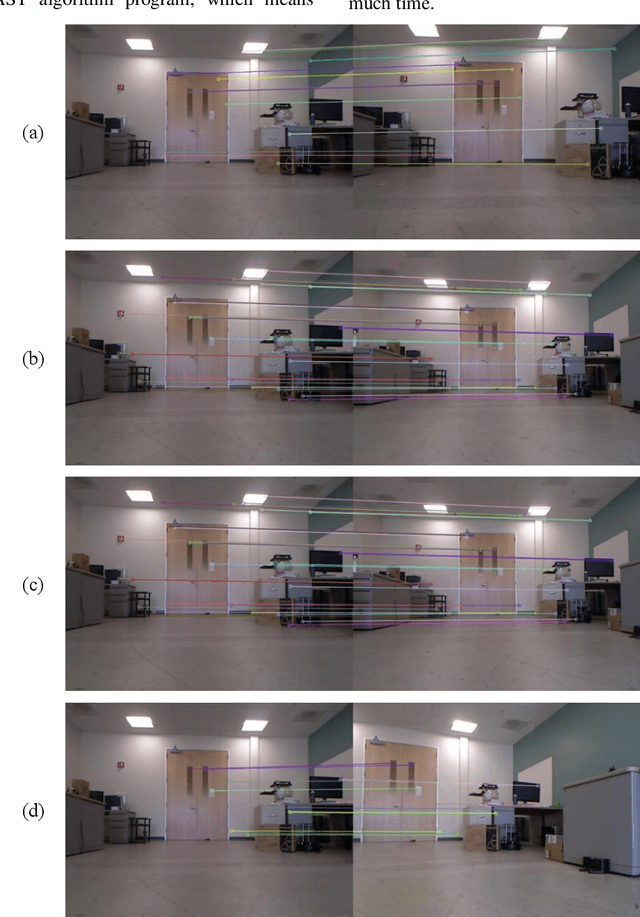
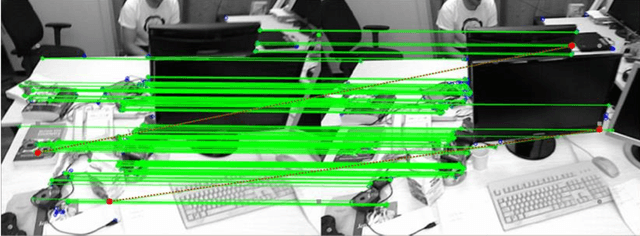
Abstract:In simultaneous localization and mapping (SLAM), image feature point matching process consume a lot of time. The capacity of low-power systems such as embedded systems is almost limited. It is difficult to ensure the timely processing of each image information. To reduce time consuming when matching feature points in SLAM, an algorithm of using inertial measurement unit (IMU) to optimize the efficiency of image feature point matching is proposed. When matching two image feature points, the presented algorithm does not need to traverse the whole image for matching feature points, just around the predicted point within a small range traversal search to find matching feature points. After compared with the traditional algorithm, the experimental results show that this method has greatly reduced the consumption of image feature points matching time. All the conclusions will help research how to use the IMU optimize the efficiency of image feature point matching and improve the real-time performance in SLAM.
 Add to Chrome
Add to Chrome Add to Firefox
Add to Firefox Add to Edge
Add to Edge